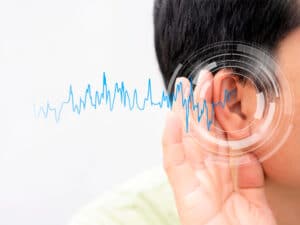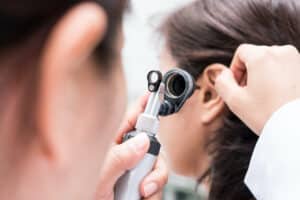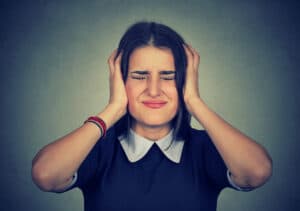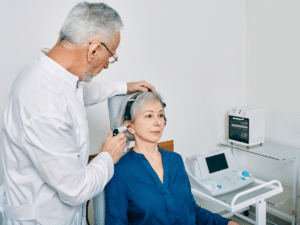Did you know that approximately 1.1 billion young people are at risk of hearing loss due to exposure to loud noise? This staggering statistic, reported by the World Health Organization, highlights the alarming prevalence of noise-induced hearing loss (NIHL) in today’s world. Our ability to hear and enjoy the sounds around us is precious, but it is under constant threat from the noisy environment we live in.
What is Noise-Induced Hearing Loss?
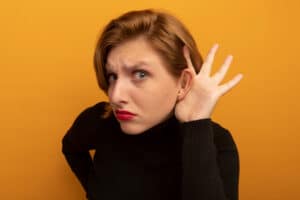
Noise-induced hearing loss occurs when the delicate structures of the inner ear are damaged by prolonged exposure to loud noises or brief exposure to extremely loud sounds. The impact can be gradual, leading to a slow decline in hearing ability over time, or it can be sudden and severe. Common causes of NIHL include occupational noise exposure, recreational activities, and exposure to explosive sounds.
The journey of sound begins when sound waves enter the outer ear and cause the eardrum to vibrate. These vibrations then travel to the middle ear, where three tiny bones called the ossicles amplify and transmit the sound further. Finally, the vibrations reach the inner ear, which houses the cochlea—a spiral-shaped organ filled with fluid. Within the cochlea, there are thousands of tiny hair cells that play a critical role in converting the vibrations into electrical signals. These signals are then sent to the brain through the auditory nerve, allowing us to interpret them as sound.
However, when we subject our ears to loud and excessive noise over extended periods, these delicate hair cells can become damaged or even destroyed. This damage disrupts the conversion of sound vibrations into electrical signals, resulting in noise-induced sensorineural hearing loss. Unlike conductive hearing loss, which occurs when sound cannot pass through the outer or middle ear, sensorineural hearing loss is caused by damage to these vital hair cells or the auditory nerve in the inner ear.
Causes of Noise-Induced Hearing Loss
Noise-induced hearing loss (NIHL) can be attributed to various causes. Understanding these causes is essential in order to take preventive measures and protect our hearing. Here are some common causes of NIHL:
Occupational noise exposure
Many professions expose individuals to high levels of noise on a daily basis. Jobs in industries such as construction, manufacturing, mining, and agriculture often involve machinery, tools, or equipment that generate loud noise. Prolonged exposure to these occupational noises can lead to NIHL if proper hearing protection is not used.
Recreational activities
Participating in recreational activities with high noise levels can also contribute to NIHL. Activities such as attending concerts, nightclubs, or sporting events, where loud music or cheering crowds are present, can expose the ears to harmful noise levels. Personal listening devices, such as MP3 players and headphones, when used at high volumes for extended periods, can also cause damage to the inner ear.
Environmental noise
Living in areas with constant exposure to loud environmental noises, such as heavy traffic, construction sites, or airports, can contribute to the development of NIHL over time. Continuous exposure to these noisy environments can gradually damage the delicate structures of the inner ear.
Explosive sounds
Exposure to sudden and extremely loud sounds, such as explosions or firearms, can cause immediate damage to the auditory system and lead to instant or temporary hearing loss. These types of sounds can cause trauma to the delicate structures of the ear, including the eardrum and the hair cells in the cochlea.
Personal habits and lifestyle choices
Personal habits and lifestyle choices can also contribute to NIHL. Listening to music at high volumes through headphones, attending loud parties or events without ear protection, and neglecting to take breaks in noisy environments can all increase the risk of developing hearing loss.
Recognizing the Symptoms of Noise-Induced Hearing Loss
Recognizing the early signs of noise-induced hearing loss is crucial for taking timely action. Some common early symptoms include difficulty understanding speech in noisy environments, ringing or buzzing in the ears (tinnitus), and a feeling of fullness or pressure in the ears. Others may experience a gradual decline in hearing ability, particularly for high-pitched sounds. It’s important to pay attention to these signs and seek a professional evaluation if any symptoms arise.

Common symptoms of noise-induced hearing loss include:
- Difficulty understanding speech in noisy environments
- Ringing or buzzing in the ears (tinnitus)
- Feeling of fullness or pressure in the ears
- Gradual decline in hearing ability, especially for high-pitched sounds
If you experience any of these symptoms, it is important to seek a professional evaluation from an audiologist or an ear, nose, and throat specialist (ENT) for a comprehensive assessment and appropriate guidance. Early detection and intervention can help prevent further deterioration of hearing and improve the management of noise-induced hearing loss.
Preventing Noise-Induced Hearing Loss
Noise-induced hearing loss is a preventable condition, and raising awareness about its causes and prevention strategies is crucial. By being informed and proactive, individuals can take steps to protect their hearing in various environments. Here are some tips for identifying and avoiding noisy environments:
1. Be mindful of your surroundings – Pay attention to the noise levels in your environment, whether it’s at work, during recreational activities, or in everyday situations. Avoid prolonged exposure to loud noises whenever possible.
2. Use smartphone apps – Utilize smartphone apps that measure noise levels. These apps can provide real-time information about the decibel levels in your surroundings, helping you identify potentially hazardous noise environments.
3. Advocate for lower noise levels – Encourage organizations, venues, and public spaces to implement noise control measures and maintain reasonable noise levels. By advocating for reduced noise, we can create environments that are more conducive to hearing health.
Being proactive in protecting your hearing is essential. Here are some measures you can take:
1. Take regular breaks – If you find yourself in a noisy environment, take periodic breaks to give your ears some rest. Even a few minutes of quiet can help reduce the cumulative effects of noise exposure.
2. Limit the volume – When using personal listening devices, such as smartphones or MP3 players, keep the volume at a moderate level. A good rule of thumb is to use the “60/60 rule” – listening at 60% of the maximum volume for no more than 60 minutes at a time.
Exploring the Role of Hearing Protection Devices
Hearing protection devices are effective tools for reducing noise exposure and preventing noise-induced hearing loss. Here are different types of hearing protection and tips for selecting and using them:
1. Earplugs: These small devices are inserted into the ear canal to block out or reduce noise. They come in various types, including foam, reusable, and custom-molded earplugs. Choose earplugs that provide an appropriate Noise Reduction Rating (NRR) for the noise levels you encounter. Follow the instructions for proper insertion and ensure a snug fit.
2. Earmuffs: Earmuffs cover the entire outer ear and create a seal to block out noise. They are effective for reducing noise levels across a wide range of frequencies. Look for earmuffs with a suitable NRR and make sure they fit comfortably over the ears, forming a tight seal.
When selecting and using hearing protection devices:
Consider the noise levels – Select hearing protection devices with an NRR that matches or exceeds the noise levels in your environment.
Ensure proper fit – Proper fit is crucial for effective noise reduction. Follow the manufacturer’s instructions to achieve a secure and comfortable fit.
Use them consistently – Wear hearing protection devices consistently in noisy environments, whether at work, during recreational activities, or even when mowing the lawn or using power tools at home.
Promoting Hearing Health in a Noisy World
In our daily lives, we can take steps to minimize our exposure to excessive noise. Some practical tips include using noise-cancelling headphones or earplugs in loud environments, keeping volumes at a moderate level when using headphones or speakers, and taking breaks from noisy situations to give our ears a rest. By incorporating these habits, we can reduce the risk of noise-induced hearing loss.
Just as we prioritize regular check-ups for our overall health, it is equally important to have our hearing checked regularly. Regular hearing check-ups and screenings can help identify any potential issues early on. This allows for timely intervention and treatment if necessary. Consult with an audiologist or hearing healthcare professional to schedule regular hearing assessments and ensure the ongoing health of your ears.
Remember, our hearing health is a precious asset that deserves attention and care. Take proactive steps to protect your ears from excessive noise, prioritize regular check-ups with a hearing healthcare professional, and adopt healthy habits to maintain overall ear and hearing health.
Consult an Audiologist Today

If you have any concerns about your hearing or would like to schedule a comprehensive hearing assessment, we encourage you to consult an audiologist at Listen Hear Diagnostics. As a leading hearing specialist and audiologist in Westchester, NY, Listen Hear Diagnostics is committed to providing the best hearing loss treatment and customized hearing aids.
Take the first step towards better hearing by visiting Listen Hear Diagnostics at listenheardiagnostics.com or calling (914) 902-8845. Our experienced team can guide you through an online hearing test or help you explore a range of hearing aids from top brands such as Signia, Widex, Starkey, Oticon, and Phonak. We understand that hearing loss impacts people differently, and we strive to develop personalized approaches to treatment based on the severity of your condition.
Your hearing health is important, and at Listen Hear Diagnostics, we are dedicated to helping you regain the quality of hearing you deserve. Schedule an appointment or explore our services today to start your journey to better hearing.



